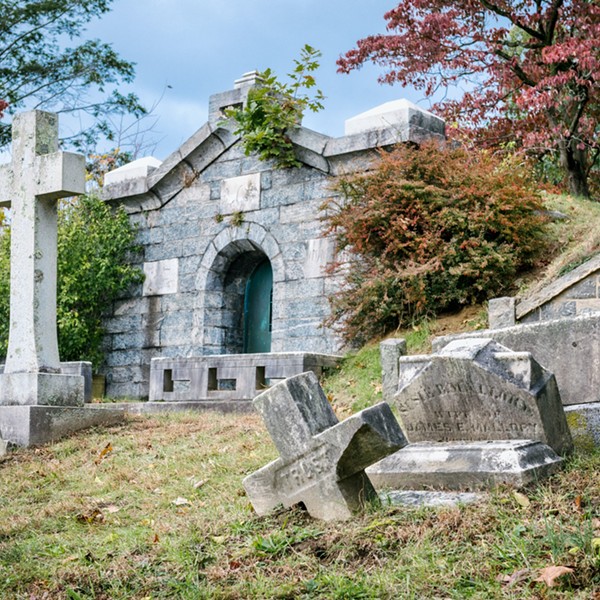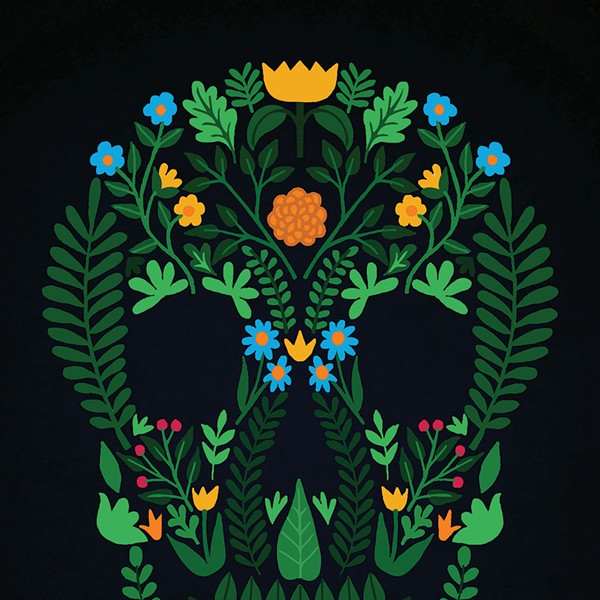Inside, Buddy’s Place is divided in half, with an office on one side and the incinerator and walk-in freezer for cadavers on the other. Smelling lightly of nag champa incense, with a futon couch and glass-fronted woodstove along the wall, the office also doubles as display area for urns and other containers for “cremains,” as the ashes are referred to. Customers are able to select from among the tin canisters of varying sizes and designs, hefty brass urns, granite headstones, and handcrafted, locally made, wooden boxes. The cremains are given to clients in the container of their choice, along with a satin drawstring bag imprinted with “forget-me-not,” a freshly cut bouquet of flowers, and, if the owners have requested, a hardened clay pawprint of the deceased. It’s also common that flowers be placed alongside the pet inside the incinerator if the owner is present for the cremation. As Andrea will emphasize throughout the day, whether the deceased is human or not, providing dignity and ritual to death is important to the bereavement process. From the pictures of pets and thankful letters sent by past clients, it’s obvious the Walkers’ efforts are appreciated. Anyone believing such consideration in the pet funeral industry is typical, however, would be sadly disappointed.
When Karen Walker’s aged basset hound, Buddy, was euthanized at home in the mid-’90s, she asked the attending vet to have the body cremated so she could scatter the ashes. Like most veterinary clinics, this one outsourced cremations to incineration specialists, and, in Buddy’s case, the specialist was named Terence McGlashan. With his silken manners and impeccable suits, McGlashan appeared every inch the professional mortician, but instead of cremating the cadavers, he paid a dairy farmer to dump them in a pit not far from Saratoga Springs. The unsuspecting pet owners were given ordinary wood ashes, though anyone who’s ever seen human or pet cremains would know that no matter how finely sifted, a few tiny shards of bone are always present. When the police discovered the pit after a passing jogger complained of the smell, more than 40,000 animal corpses from three different states were exhumed from the reeking pasture. Adding to the horror was McGlashan’s sideline: medical waste incineration. Internal organs, surgically removed tumors, and hypodermic needles were strewn throughout the pit. The police and the state wildlife pathologist sorted through the corpses’ identifying tags in order to inform as many of McGlashan’s clients as possible what had happened to their pets, and McGlashan eventually served a six-month sentence for fraud. But that was little consolation to the Walkers, who were inspired to create a pet crematorium and funeral service that provided everything they’d been denied by McGlashan: the clean, respectful, and dignified service any beloved companion deserves. This
For better or worse, Karen tells me, this day’s cremation will be a messy one. It’s a 14-year-old golden retriever that’s died of natural causes. The elderly owner had trouble with the body, though, and the retriever had been stuck in the furnacelike trunk of his car for a full day before a vet performed an autopsy and turned the corpse over to the Walkers.
What’s amazing about the Walkers, however, is that they haven’t surrendered to that numbness. The retriever is laid on a tarp on top of a raised stretcher, and Karen is right, this one is disgusting. The body reeks, the autopsy sutures are bursting, and maggots squirm everywhere, but still, time is taken to press the paw twice into the clay so the owner gets a clear print before the corpse is carefully rolled into the oven. Visibly horrified by the larvae, Andrea is bleaching the floor the moment the oven door closes, and whether it’s Andrea shuddering at the maggots or Karen hauling the fetid tarp out into the sun, it’s plain that what these women do isn’t easy for them but they do it because they believe the grieving owners and their deceased animals deserve their care. Not an easy accomplishment when the messiest details of death are a workaday reality.
















